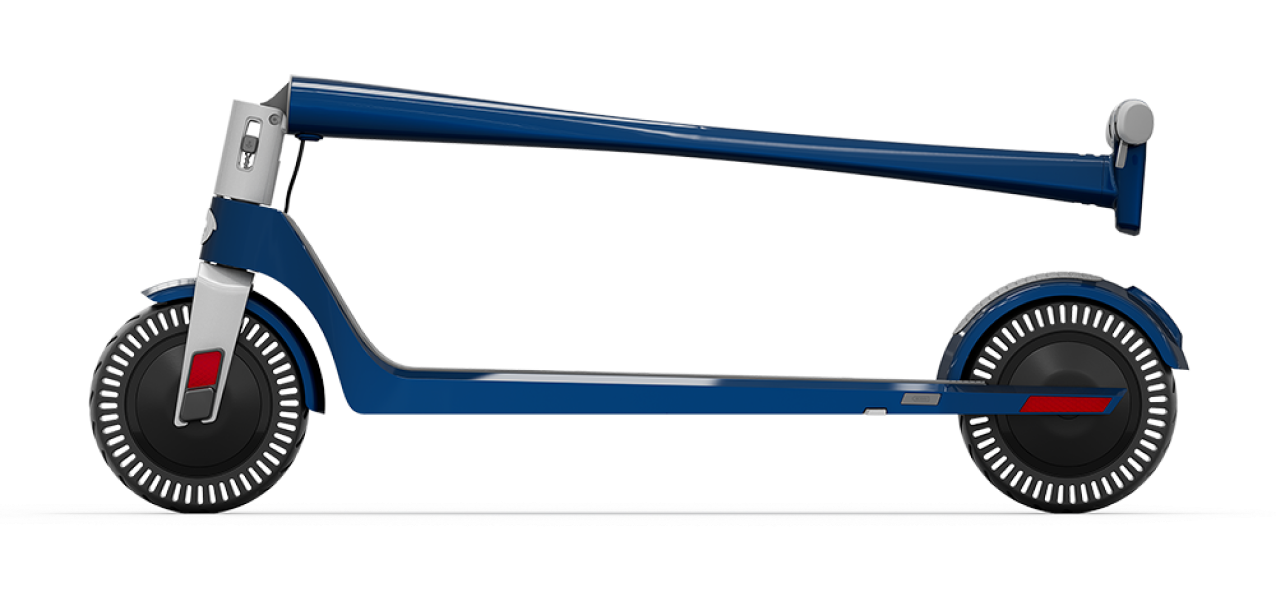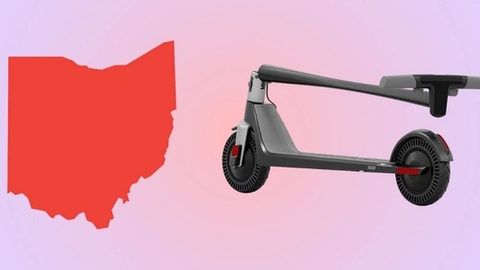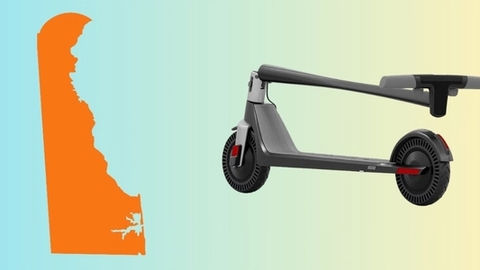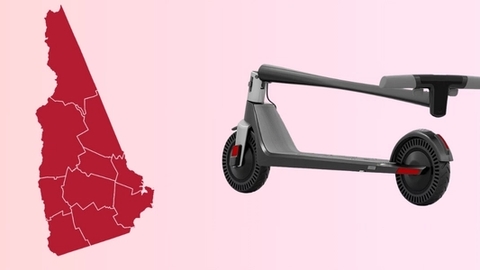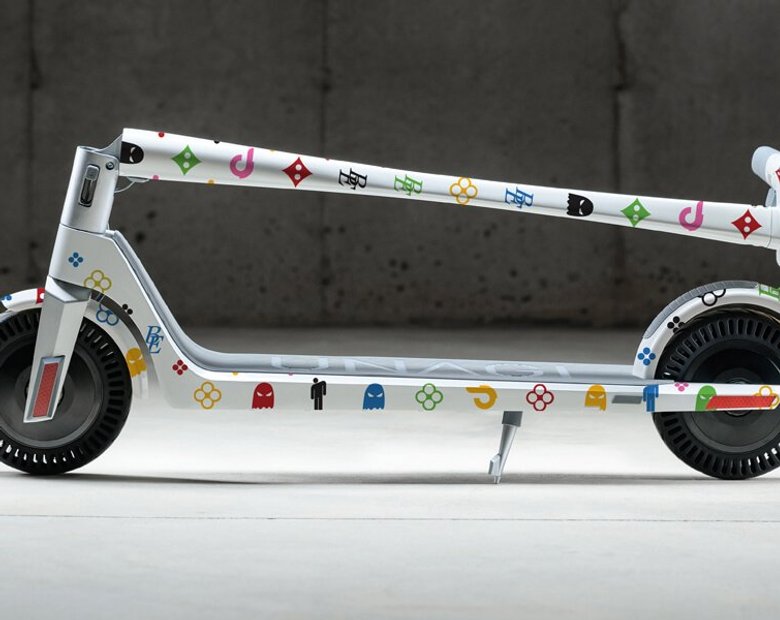Micromobility is here to stay, and it’s changing how we experience urban life for the better. With Unagi’s membership program, you can enjoy all the benefits of a top-tier electric scooter without the sky-high price of ownership or the inconvenience of ride-sharing.
It's finally time to take your brand new electric scooter out for its first spin! But before you do, there are a few things you need to do to make sure it's ready for the road. This article will walk you through everything you need to do to get your electric scooter ready for its maiden voyage including tips to help make your first ride a success!
Adhere to the ATGATT Philosophy
When it comes to riding an electric scooter, safety should always be your top priority. One of the best ways to ensure your safety while riding is to practice ATGATT – or "All The Gear, All The Time."
ATGATT is a philosophy that suggests that riders should always wear the appropriate gear whenever they're riding, regardless of the situation. This means wearing a motorbike-style full outfit including helmet, gloves, knee pads, elbow pads, and other protective clothing every time you ride.
The reasoning behind ATGATT is simple – it's much better to be safe than sorry. Accidents and falls can happen at any time, and by wearing the proper gear, you can help minimize the risk of serious injury if you do happen to take a spill.
So next time you're getting ready to ride your e-scooter, make sure you're following ATGATT and always wear the proper safety gear. It could just save your life one day.
Read the Manual
The first thing you should do when you get your e-scooter is read the manual. This may seem like a no-brainer, but it's important to familiarize yourself with your e-scooter and how it works before taking it out for the first time. In the manual, you'll find information on how to operate your e-scooter, troubleshooting tips, and more

Familiarize Yourself with the Scooter
Assuming you've already assembled your e scooter, it's time to get familiar with the controls before taking it for a spin. Take some time to get acquainted with all the important controls on the scooter, including the brake lever, power button, horn, and accelerator. These are all vital for the safe operation of your scooter.
How the brakes work
When you first get your e-scooter, it's important to become familiar with how the brakes work. Most scooters have brakes that can be activated through a hand lever on the handlebar or by foot through a mechanical fender (foot) brake.
If your scooter has a hand lever brake, it will usually be located on the left side of the handlebar. Some scooters have brake levers on both sides of the handlebar which are used to activate the front and rear brakes separately. Hand levers are simpler to use and work, just like the brakes on a bicycle. To activate them, simply squeeze the levers towards the handlebar.
Foot brakes, on the other hand, are usually located on the rear fender. To use them, simply press down on the fender with your foot. This may feel a bit strange at first, but you'll get the hang of it with a little practice.
Whichever brake you have, it's important to get familiar with it before riding an electric scooter. Take some time to practice stopping and starting in a safe area, such as a parking lot or quiet side street. This will help you get a feel for how the brakes work and how much pressure is needed to stop the scooter, as too much pressure can cause the scooter to skid.
How to Use the Electric Throttle/Accelerator
It's important to get familiar with the throttle before taking your first ride. Why? Because the throttle is what controls the speed of your scooter.
The throttle is normally located on the right side of the handlebar.
There are three main types of throttles: trigger throttle, thumb throttle, and handlebar twist. Each one works slightly differently, so it's important to know which one you have and how to use it.
Once you know which type of throttle you have, it's time to get familiar with its sensitivity. This is important because you don't want to accidentally put too much pressure on a throttle that has a quick response; this will cause the scooter to go too fast, prompting you to lose control and potentially damage the scooter (or yourself).
To do this, simply suspend the wheel that houses the motor and engage the throttle to see how it responds. Does it accelerate slowly? Quickly? Is it easy to control?
By getting familiar with your e-scooter's throttle, you'll be one step closer to having a safe and enjoyable ride.
Locate the Power Button
This is typically located close to the middle of the handlebar and may be integrated with the centre display on some models. Other scooters, like Razor brand scooters, may have the power button placed on the side of the deck.
The power button serves several purposes: it turns the scooter on and off, it can be used to toggle between different ride and speed modes (if your scooter has these options), and it also turns on/off the lights of the scooter. Taking a few moments to locate and understand the power button before you ride will help you feel more confident and in control when operating your e-scooter
Understand the Display
Typically located in the middle of the handlebar, the display on your e-scooter is one of the most important features. It's how the scooter communicates important information to you, such as battery life and range, speed, and error messages. In case of any issues with the scooter, the display will often be the first place to look for troubleshooting information.
Also, one of the most important things to keep an eye on on your display is the battery life indicator. This will let you know how much power you have left and how far you can go before needing to recharge.
Honk the Horn
Electric scooters typically have a horn that can be used to signal to other people or vehicles on the road. The horn can be useful for warning someone of your presence, especially if they're not paying attention. It can also be used to frighten animals away from the road. In some cases, the horn may even be required by law to guarantee that you are riding your electric scooter safely.
Find A Safe Place to Practise

Where to ride your E-scooter as a learner?
The best place to practice riding your electric scooter as a learner is on an open, flat, or paved road surface with no obstructions (where you'll have plenty of room to manoeuvre). This could be a park, on private property, or an empty parking lot. You should avoid riding in crowded areas or on busy streets until you feel comfortable and confident on your electric scooter.
Which Scooter Type is recommended for a Learner
Motor power is one of the most important factors to consider when choosing electric scooters. A higher motor rating will generally result in a faster and more powerful scooter, which can be fun for experienced riders but may be overwhelming for beginners. You should also be cautious of starting off with too high of power output, as you may not be ready to handle it.
For this reason, it is usually best to start with an electric scooter with a lower motor rating, typically one that has a motor rating below 500W. These electric scooters will typically be slower and less powerful, making them easier to control. Once you have gained confidence in your riding abilities, you can gradually move up to an electric scooter with a stronger motor.
Beginner scooters you may consider include Xiaomi M365, Unagi model One, GOTRAX GXL Commuter v2, Apollo Air, Segway Ninebot Air T15, Swagtron Swagger 5 - the list is endless.
Basically, each manufacturer has at least one scooter in the beginner category, so you will have a wide pool to select from. With so many great electric scooters on the market, there's no chance you'll miss out on one that meets your exact needs.
Pre-ride checklist
Assuming you've already assembled your electric scooter, there are still a few things you need to do before taking it for a spin. Here's a quick checklist to get your electric scooter ready for its maiden voyage:
- Confirm whether the brakes are working fine. Brakes are crucial for safety, so it's important to ensure they are in good condition before riding. Make sure to replace worn-out brake pads. If you're not confident in your ability to fix brakes, take your electric scooter to a professional for a tune-up.
- Ensure the scooter is fully charged for max range and useability. Charge the battery according to the manufacturer's instructions using the original charger.
- Make sure the stem locking mechanism is securely locked. This is to avoid any situation where the scooter's stem collapses while you are in the middle of your ride.
- Check on the tires. Inflate the wheels to the recommended pressure and check for any punctures or damage. The right tire pressure will give you a smoother ride and prolong the life of your tires.
- Check the lights. If your electric scooter has a headlight, tail light and indicators, test them to ensure they're working properly.
- Once the scooter comes on, listen for weird noises from your portable vehicle to ensure the motor is working fine.
Making sure you have an emergency toolkit with you before you ride an electric scooter is always a good idea. A puncture repair kit can come in handy in case of a flat tire, and other tools like a mini pump or multi tool can be useful in a variety of situations.

How to Ride Your Electric Scooter for the First Time
Here are a few things you should keep in mind before you ride an electric scooter for the first time:
Here are a few tips to help you get started:
Start with small squeezes of the throttle to get a feel for how it works. Once you're comfortable you can give it more gas to pick up speed. Just be careful not to overdo it, especially on a scooter with a powerful motor.
Plant your weight on the rearfoot and use it to help you lean forward. When leaning forward, your weight will be shifted closer to the front wheels. This will help maintain the front wheel traction, preventing you from pulling the handlebars when there is an increase in acceleration, and preventing the rear wheels from slipping.
Lower your centre of gravity by bending your knees when accelerating hard. This will help to maintain balance and stability.
Keep your body relaxed. Tensing up when accelerating will make it harder to control the scooter. Accelerate slowly if it's your first time, and only speed up when you're feeling completely confident.
Tips to brake safely
Here are some tips to help you brake safely and effectively:
When braking, always remember to bend your knees and shift your body weight to the back/rear foot as though you are assuming a seated position. This will help improve your stability and prevent you from being thrust forward due to the sudden braking. This calls for you to also ensure you have comfortable knee pads that protect you without restraining movement.
It's important to be aware of how the brakes work and how much pressure you need to apply in order to stop. Avoid pressing the brakes hard. This can cause them to lock and throw you off the scooter or skid. Instead, try to find the sweet spot that's just before the brake lock for maximum brake power.
If your scooter has a dual braking system, with both front and rear brakes, you need to use both brakes for optimal stopping power. Applying too much pressure to either one can cause one end of the electric scooter to be unstable, which can cause a fall.
It is important to be aware of the different surfaces you will encounter and how they will affect your braking. Wet leaves, sand, gravel roads, and other slippery surfaces have reduced friction and traction, so be very careful when braking in these conditions.
Be careful when braking in wet weather. Due to the decreased friction and traction that is present on wet surfaces, it is important to be more cautious when braking under such conditions. Wet roads can make it more difficult to brake quickly and could even cause slipping hazards. To help prevent any accidents, give yourself extra time and space to come to a stop. Avoid applying a lot of braking force at an instance as it may cause the scooter to skid and fall.
It's important to brake when riding an electric scooter in a straight line since braking while hitting a curve can cause you to skid and lose control of your scooter. If you need to execute an emergency stop, make sure to straighten the front wheel and the scooter before doing so.
Have a rough idea of your stopping distances (Perception distance+Braking distance). Your perception distance is the distance you travel from the time you see an object until you react to it. For example, if you see a child running into the street, you need to factor in Perception Distance + Braking Distance to stop in time. Your braking distance is the distance your scooter travels from the time you hit the brakes until it comes to a complete stop. This will vary depending on the riding surface, the type of brakes your scooter has, riding as well as its current speed. Always allow for a larger stopping distance than you think you need to be safe. This way, you can be sure to avoid any accidents.
Doing these things will help you to stop safely and avoid any accidents.

Improve Posture and Foot Placement
Your stance and posture on the electric scooter are very important, as it determines your stability, comfort, and manoeuvrability. Here are some tips on how to improve it:
There are three main riding stances: goofy, regular, and side-by-side. A goofy stance is when the right foot is in front of the left foot. A regular stance is when the left foot is in front of the right foot. And side-by-side stance is when both feet are next to each other. Of the three, a side-by-side stance is not recommended as it significantly reduces the rider's balance during acceleration and braking. The best stance for first-time riders is either the Goofy stance or the Regular stance. To figure out which way you should stand, try both options and see which feels more comfortable-your body will naturally have a preference.
Remember to keep your feet facing forward, parallel to each other and slightly tilted outwards away from the deck while on a goofy or regular stance.
Always keep your knees slightly bent and avoid locking your joints. This position helps to absorb the shock of bumps and obstacles rather than placing all of the stress on your joints.
It's important to ensure that your wrists and hands are in a natural, comfortable position. If you feel any discomfort, you can adjust the handlebar height to ensure that your wrists are not bent up or down too much. When positioned correctly, your arms should be bent to 90 degrees or less with your hands resting easily on the handlebars without putting any unnecessary strain on your wrists. However, most the scooters do not come with an adjustable handlebar height feature, so be sure to check if the scooter's height is suitable for you before buying a particular scooter.
Steps to Riding an E-scooter
You’re now familiar with the dos and don’ts when riding electric scooters. Now, we get into the actual process of boarding the scooter and catching the wind in your hair.
- Place the electric scooter on a flat paved surface.
- Unfold the scooter and ensure the stem is firmly locked.
- Inspect the scooter for any damage before you start riding. Check the brakes, tires, and deck for obvious damage, and make sure everything is in good working condition.
- Turn on the scooter via the power button.
- Remove the kickstand and firmly hold the handlebars.
When you're ready to start riding, place one foot on the deck and push off with the other foot to get moving. Push off with your foot and coast for a few seconds before lightly pressing down on the brake to stop. Once comfortable balancing and coasting, you can try riding with both feet on the deck(in the regular or goofy stance). To do this, just push off as before and then press the throttle to propel yourself forward.
Note: As a beginner, it is advisable to enable the kick to start feature on your scooter. This feature is designed to prevent accidental engagement of the throttle, which can cause the scooter to lurch forward unexpectedly. To engage the throttle and motor, you must first kick the scooter to achieve a speed of 1.5 mph. This ensures that you are in control of the scooter before accelerating.
- Start by slowly pressing the throttle while keeping a firm grip on the handlebars. Keep in mind that how much pressure you apply to the throttle will determine how fast the scooter goes. As you get used to how the throttle works, you can experiment with different speeds and see what feels comfortable for you. Just make sure to keep your grip on the handlebars at all times and be aware of your surroundings as you ride.
- For scooters with speed modes, it's advisable to set the speed mode to its lowest setting (which caps the maximum speed the scooter can attain), then increase it once you have gathered experience riding and mastered how to accelerate on the scooter.
- To brake gradually, squeeze the handbrake levers slowly and evenly. Don't slam on the brakes, or you might lose your balance and end up falling off the scooter.
- Ride in a straight line at first, and then once you feel confident, you can start making turns. For cornering at low speeds, you will need to use the handlebars to steer the scooter; just rotate the handlebars in the direction you want to turn. You may also have to adjust your weight and engage your core muscles to keep the scooter balanced. At higher speeds, you should keep the handlebars mostly straight and use your body weight to shift and turn. But this should be done after you have had some experience in riding. When starting out, stick to slowing down when cornering and use the handlebars to steer.
- When coming to a complete stop, make sure to put your foot down on the ground to stabilise yourself. This will help prevent you from tipping over.
- Once you are done with the ride. Switch off the scooter and park the scooter by engaging the kickstand.
- Be sure to clean your electric scooter after taking it out for a ride. Wipe down the body and all of the moving parts with a damp cloth. Clean off any dirt or debris that may have collected on the scooter.
Common Mistakes Made by Beginner Riders
There are a few common mistakes that many beginner riders make, which can reduce their control and stability, as well as reaction speed in case of an emergency. Here are a few things to avoid:
Zoning Out
When you zone out, you're not paying attention to your surroundings, and you're not aware of what's happening around you. This can lead to accidents and injuries. Stay alert at all times when riding an e scooter and watch out for pedestrians, other vehicles, and obstacles in your path. And needless to say, avoid using your mobile phone when riding, regardless of devices like earphones-they substantially take away your attention from the road.
Assuming your Visibility
When riding an e scooter, it's important to be aware that you are much smaller and less visible than a vehicle or a motorcycle. Always assume that other drivers can't see you, and take precautions such as wearing bright clothing or using a headlight at night.
Pressing the Throttle too Hard
One of the most common mistakes made by scooter riders is pushing the accelerator too hard. This can cause the scooter to jerk forward suddenly and cause the scooter to speed up quickly, which makes it difficult to control.
Taking Corners at a High-speed
Coming into a corner at high speed can cause you to lose control of the scooter. You may end up crashing or running off the road. This is because all the forces (Gravitational, centrifugal, inertia, friction) that keep the scooter upright become unbalanced, making the scooter unstable. Additionally, when taking corners at high speed, you also have less control over the scooter, making it more difficult to stay on course.
Hitting the Brakes Hard
Hitting the brakes hard can also cause problems, as it can cause the scooter to skid or cause the scooter to lurch forward, which can throw you off balance and cause you to fall. Riders should pump the brakes lightly to slow down gradually.
Leaning on the Scooter
Leaning on the scooter can put unnecessary weight on the handlebars and make it more difficult to steer. Scooter riders should always stand up straight and hold onto the handlebars securely.
Not Wearing the Required Gear
Not wearing the proper gear is another mistake that scooter riders often make. While it may not seem like a big deal, not wearing a helmet, knee and elbow pads, or other protective gear can put you at risk in the event of an accident. Electric scooters can reach high speeds, and if you fall off, you could be seriously injured.
Oversteering
Steering too hard is a mistake a lot of scooter riders make, especially when they're first starting out. What happens is that the front wheel turns so sharply that it locks up, and the front wheel essentially acts as a brake. This violent stop can often send the rider flying over their handlebar.
Another common mistake is making sudden, quick steering movements. This can lead to instability and the scooter potentially tipping over. Remember to always turn the handlebar gently and slowly in order to maintain control of your scooter. So take it easy on those turns!
Improper Foot Placement
Side-by-side foot placement reduces stability when braking or accelerating hard and can easily lead to a loss of control. When riding, always maintain a regular or goofy foot stance to stay safe and in control.
Riding with One Hand
This can be dangerous for a number of reasons. For starters, scooters typically have small tires that are prone to wobbling. This means that if you remove one hand from the handlebars, you will have less control over the scooter. Additionally, if you need to quickly react to an emergency situation, not having both hands on the handlebars could put you at a disadvantage.
Understand the General Road Rules and Regulations of an Area
Many people often take for granted the various road rules and regulations that come with electric scooter riding in a specific area. It's important to be aware of these before you hit the open road, as ignorance of the law can result in costly fines or worse.
Each state or region may have different laws in place, so it is important to research and understand the specific requirements for the area you are travelling in.
Some of the things to look out for as you ride an electric scooter include:
Speed Limits
Different countries have different speed limits for e-scooters on public roads. Generally, the speed limit is between 12 km/h to 25 km/h. Most beginner scooters have a capped top speed of 25 km/h, so this aids in riding within limits. Some scooters also come with speed modes, which allow you to set the maximum speed the scooter can attain. Thus, you can lower the top speed based on the speed limits of an area and avert the possible problems of going above the speed limit.
Prohibitions associated with the use of E scooters
In some countries, the right to ride an electric scooter on public roads is prohibited altogether, while in others, they are only allowed on designated paths/bike lanes; riding on pavements and pedestrian lanes is an offence.
The UK is a good example of a country that hasn't fully legalized e scooters. The e-scooters can only be ridden on private land or as part of a rental program in approved boroughs. A personal scooter cannot be ridden on public roads or pavements.
So if you're planning on using an e-scooter, be sure to check your country or city's laws and regulations regarding their use.
Age Limits
There are age limits in place for scooter use in public areas in most countries. The minimum age limit typically in most countries is 16 years old. The age limits that are enforced ensure that only those whose age and experience riding inspire confidence with decision-making on the road–it is a matter of prioritizing safety for the rider, pedestrians, and other road users on vehicles, motorcycles and bicycles.
License and Insurance
To ride an electric scooter that is privately owned in public, some countries may require that you have a valid license or insurance. For example, in Germany, you may need to have a valid insurance policy before operating your scooter on public roads.
Safety Gear and Accessories
Riders must take into account the safety gear and accessories required by their country's laws. In most cases, riders will be required to wear a helmet while using an e-scooter in public. This is to protect them from head injuries in case of an accident. The scooter itself should also be fitted with a bell or horn to warn pedestrians of its approach. These measures are taken to protect both the rider and the public from potential accidents. Should I Charge my Battery After Every Ride?
It's not necessary to charge your scooter after every ride, but it's a good idea to keep the battery level in the 40-80% range. This will help prolong the life of your battery and ensure that you always have enough power to get where you're going.
If you choose to charge after every ride, be sure to use a quality charger designed for your specific scooter. Using the wrong charger can damage your battery and shorten its lifespan. Always follow the manufacturer's instructions when charging your scooter.
How Hard is it to Ride an Electric Scooter?
If you're new to riding, it may seem a bit daunting at first. This is especially true if you're used to riding a traditional, non-electric kick scooter. But in an actual sense riding an electric scooter is much easier than riding a classical kick-scooter. It's even easier than riding bicycles for most people.
You don't have to put in any effort to make it move, so it's really easy once you get used to it. It only takes a few minutes to learn the basics, and with a little practice, it feels like second nature.
Practise Makes Perfect
As you can see, there’s a lot to think about when it comes to preparing to ride an electric scooter for the first time. But if you take the time to do it right, you’ll be able to enjoy a safe and fun experience.
The more you practice, the better your chances are at success. Get lots of practice before hitting busy streets and be gradual with upgrades-start out by riding an entry-level model. Finally, always wear your safety gear; it could be the difference between life and death if something goes wrong.

Stay current with the latest U.S. electric scooter laws in our 2025 guide. Updated annually since our first comprehensive guide, ensuring you have the most recent state and city regulations to ride responsibly”
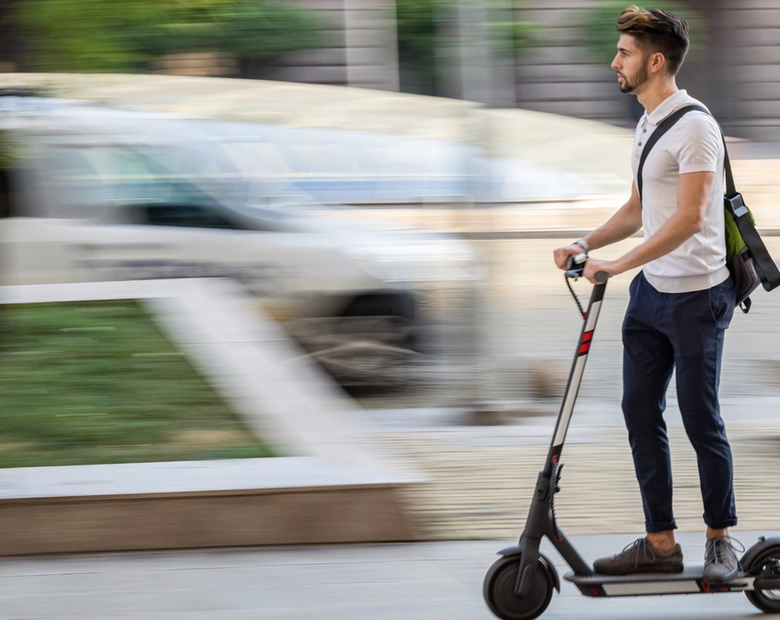
The Slack Core 920R is currently the fastest electric scooter in 2025 that you can purchase without the need for pre-order.
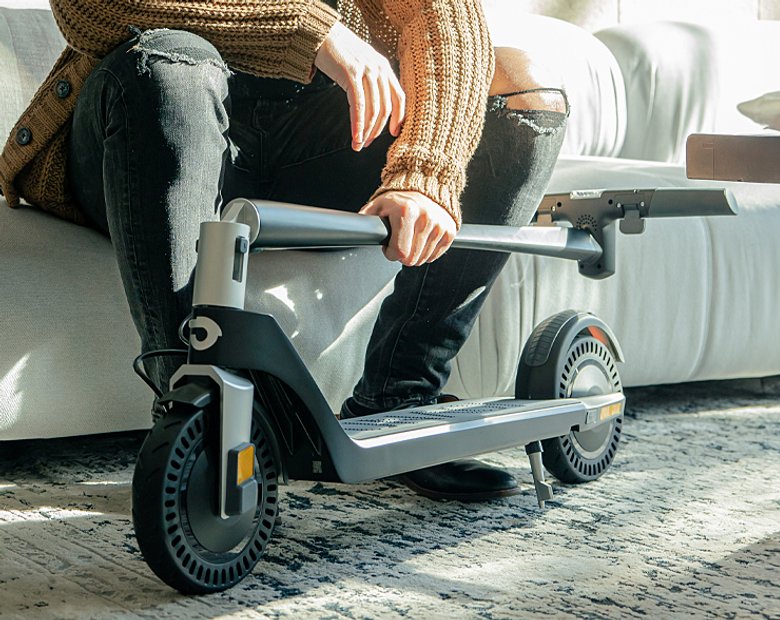
Our selection of the best electric scooters 2025 spans the fastest e-scooters to the most portable ones, the ones designed for city riding and off-road, the best scooters for rain, budget electric scooters for students, and more powerful ones for skilled riders.
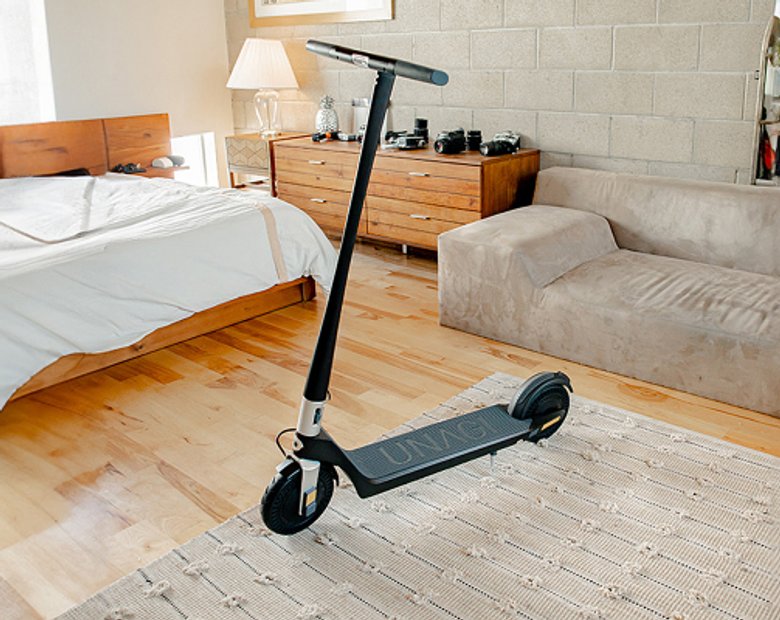
The Unagi Voyager is the best lightweight electric scooter for adults and teenagers. It is the ultraportable sequel to its predecessor, the Unagi Model One Classic.

If you're wondering whether an electric scooter with a seat is right for you, this is a detailed article that would suit your need.
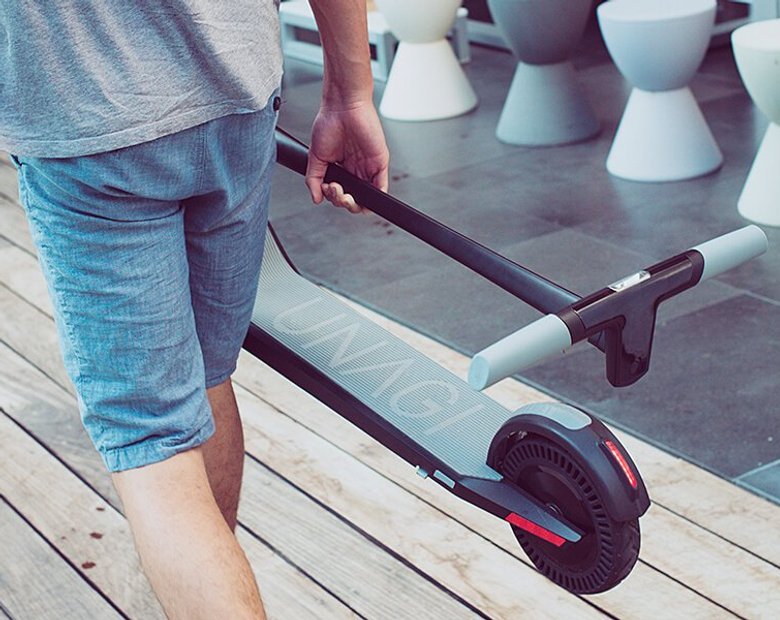
Understand which personal electric vehicle is best, the choice between an electric bike or electric scooter might already be made for you by some critical factors, including portability and storage capacity.
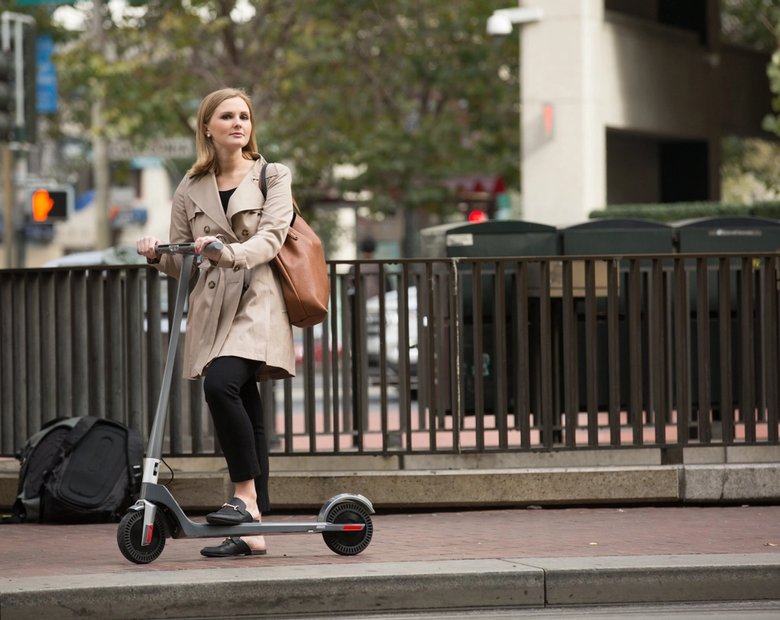
In the U.S., most states don't require a license. For those that do, they usually just ask for a regular driver's license or a learner's permit.
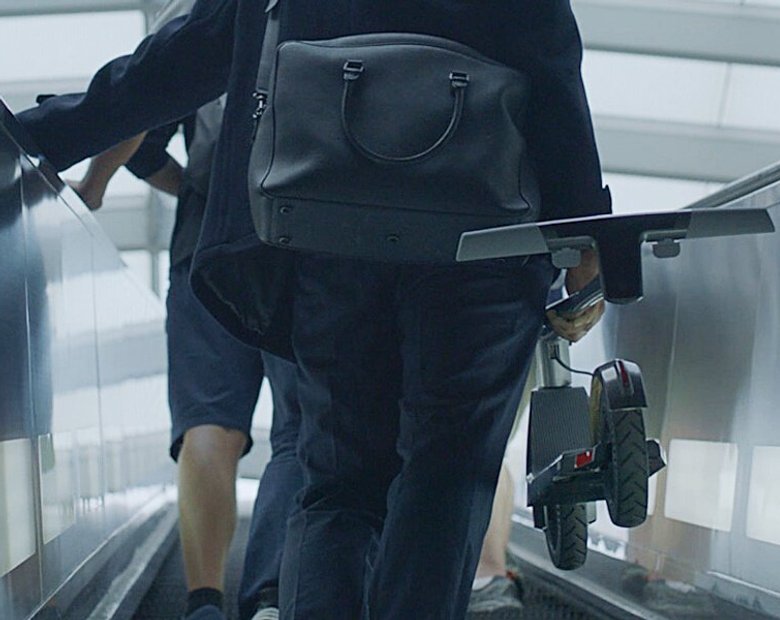
Yes, you can bring an electric scooter on a plane, but it needs to have a lithium battery smaller than 100 watt-hours, which most don't.

Manufacturers advise against riding electric scooters in the rain. The main reasons are: water can fry the electronics, make the ride dangerous, and void your warranty.

The basis and the premise of my work is that we either operate out of love or we operate out of fear...Time is currency. The coolest thing about the scooters is that it's really quick, and it goes uphill. From there, traveling more efficiently and having a good time doing it--I think that's the most important thing.

Cynthia Leu has a full plate. A tech worker by day, Cynthia spends her off time balancing the parallel lives of a powerlifter, entrepreneur, mental health advocate, and more. Riding Unagi helps this USMC veteran cut down on everyday…

https://www.youtube.com/watch?v=7m2hVBE62LY Rasheed Muhammad is sick of Los Angeles traffic. In order to preserve his sanity, Rasheed has traded his everyday driving habit for the portable and beautiful Unagi Model One. It’s an essential accessory for navigating LA streets -- and…

Rich Lee, Co-Founder of San Francisco’s SPRO Coffee Lab, wants to share his love for coffee with the world. He depends on riding Unagi to avoid the hassle of navigating the parking crunch in the booming Mission Bay neighborhood.…


